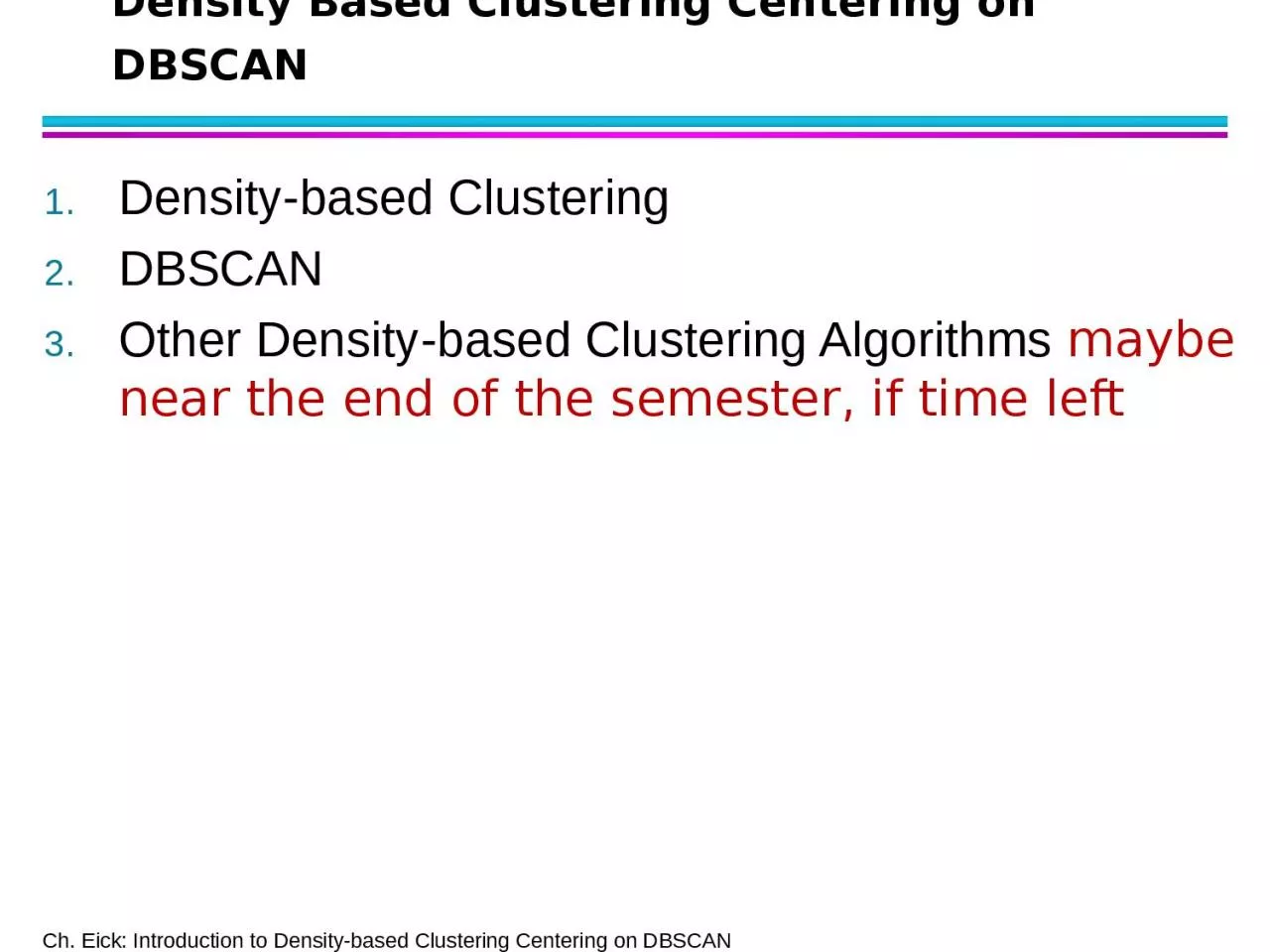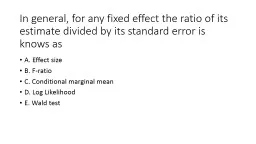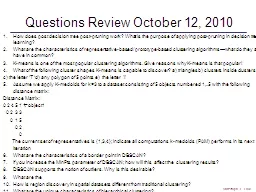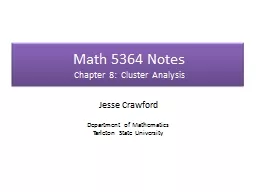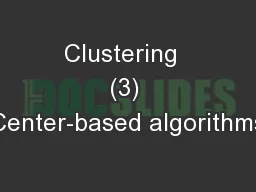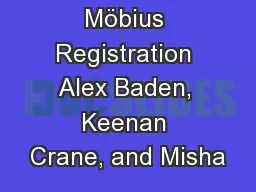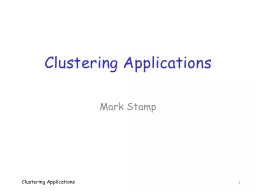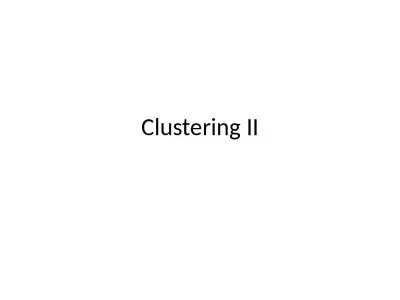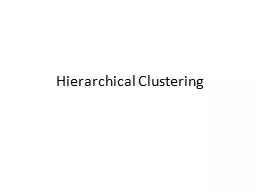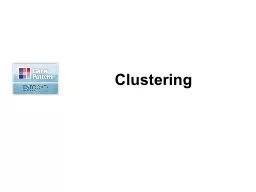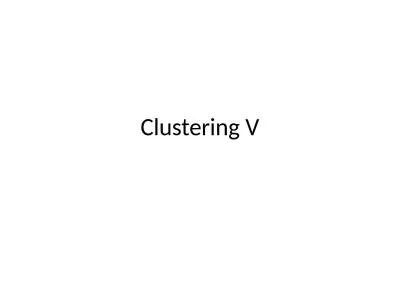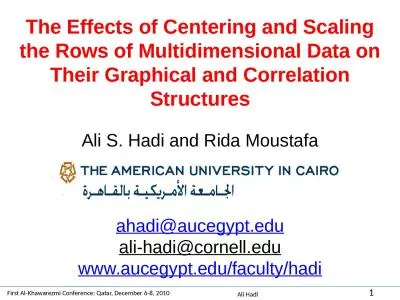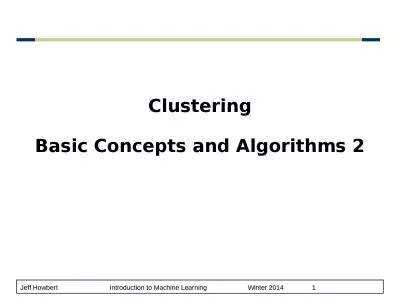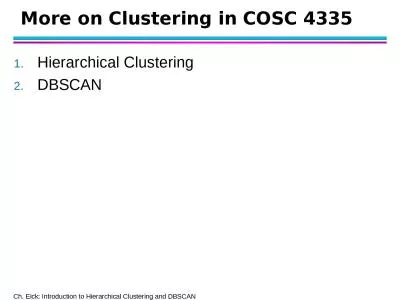PPT-Density Based Clustering Centering on DBSCAN
Author : rodriguez | Published Date : 2023-09-21
Densitybased Clustering DBSCAN Other Densitybased Clustering Algorithms maybe near the end of the semester if time left Densitybased Clustering Densitybased
Presentation Embed Code
Download Presentation
Download Presentation The PPT/PDF document "Density Based Clustering Centering on DB..." is the property of its rightful owner. Permission is granted to download and print the materials on this website for personal, non-commercial use only, and to display it on your personal computer provided you do not modify the materials and that you retain all copyright notices contained in the materials. By downloading content from our website, you accept the terms of this agreement.
Density Based Clustering Centering on DBSCAN: Transcript
Densitybased Clustering DBSCAN Other Densitybased Clustering Algorithms maybe near the end of the semester if time left Densitybased Clustering Densitybased Clustering algorithms use densityestimation techniques. Arpan. . Maheshwari. Y7082. ,CSE. arpanm@iitk.ac.in. Supervisor. :. Prof. . Amitav. . Mukerjee. Madan. M . Dabbeeru. Unsupervised Clustering Algorithms : A Comparative Study. Clustering. :. Organising. A. Effect size. B. F-ratio. C. Conditional marginal mean. D. Log Likelihood. E. Wald test. In general, for any fixed effect the ratio of its estimate divided by its standard error is knows as. A. Effect size. 12, 2010. How does post decision tree post-pruning work? What is the purpose of applying post-pruning in decision tree learning? . What are the characteristics of representative-based/ prototype-based clustering algorithms—what do they all have in common? . Chapter 8: Cluster Analysis. Jesse Crawford. Department . of Mathematics. Tarleton State University. Today's Topics. Overview of Cluster Analysis. K. -means clustering. What is Cluster Analysis?. Dividing objects into clusters. Fuzzy . k. -means. Self-organizing maps. Evaluation of clustering results. Figures and equations from Data Clustering by . Gan. et al.. Center-based clustering. Have objective functions which define how good a solution is;. Kazhdan. Shape Registration. Shape registration is essential. Matching. Correspondence. Detail transfer. Co-analysis. etc.. Shape Registration. Challenge. :. Consistent representation. Shape-preserving deformations. 1. Mark Stamp. K-Means for Malware Classification. Clustering Applications. 2. Chinmayee. . Annachhatre. Mark Stamp. Quest for the Holy . Grail. Holy Grail of malware research is to detect previously unseen malware. Produces a set of . nested clusters . organized as a hierarchical tree. Can be visualized as a . dendrogram. A . tree-like . diagram that records the sequences of merges or splits. Strengths of Hierarchical Clustering. Produces a set of . nested clusters . organized as a hierarchical tree. Can be visualized as a . dendrogram. A tree-like diagram that records the sequences of merges or splits. Strengths of Hierarchical Clustering. Log. 2. transformation. Row centering and normalization. Filtering. Log. 2. Transformation. Log. 2. -transformation makes sure that the noise is independent of the mean and similar differences have the same meaning along the dynamic range of the values.. Randomization tests. Cluster Validity . All clustering algorithms provided with a set of points output a clustering. How . to evaluate the “goodness” of the resulting clusters?. Tricky because . Ali S. Hadi and . Rida. Moustafa. ahadi@aucegypt.edu. ali-hadi@cornell.edu. www.aucegypt.edu/faculty/hadi. Outline of the Talk. Introduction. 2. Types of . Centering and/or Scaling. . Effects of Centering and/or Scaling. Hierarchical clustering. Density-based clustering. Cluster validity. Clustering topics. Proximity. is a generic term that refers to either similarity or dissimilarity.. Similarity. Numerical measure of how . Hierarchical Clustering . DBSCAN . 1. Hierarchical Clustering . Produces a set of nested clusters organized as a hierarchical tree. Can be visualized as a dendrogram. A tree like diagram that records the sequences of merges or splits.
Download Document
Here is the link to download the presentation.
"Density Based Clustering Centering on DBSCAN"The content belongs to its owner. You may download and print it for personal use, without modification, and keep all copyright notices. By downloading, you agree to these terms.
Related Documents

